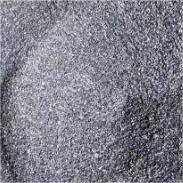**Title: The Electric Tango: Polar Molecules Caught Between Charged Plates**
(What Happens To Polar Molecules Between A Pair Of Oppositely Charged Metal Plates?)
**Subheadings:**
1. What Are Polar Molecules?
2. Why Do Polar Molecules React to Charges?
3. How Do Polar Molecules Move Between the Plates?
4. Applications: Putting Polar Molecule Movement to Work
5. FAQs: Polar Molecules and Charged Plates
**Article:**
Imagine tiny dancers, each with a positive and negative side, suddenly finding themselves on a dance floor made of metal. One wall is positively charged, the other negatively charged. What happens next? This is the situation polar molecules face when trapped between oppositely charged metal plates. It’s not just science; it’s a fundamental electric dance with real-world consequences. Let’s break down this fascinating phenomenon.
**1. What Are Polar Molecules?**
Think about water. A water molecule isn’t symmetrical. It has two hydrogen atoms on one side and an oxygen atom on the other. Oxygen pulls the shared electrons closer to itself. This makes the oxygen end slightly negative. The hydrogen ends become slightly positive. We call this uneven sharing of electrons a “polar covalent bond.” The molecule itself becomes a “polar molecule” because it has distinct positive and negative poles. Think of it like a tiny magnet with a north and south end, but for electric charge. Water is the classic example. Other common polar molecules include ammonia, ethanol, and hydrogen fluoride. Non-polar molecules, like oil or oxygen gas, have balanced electron sharing. They don’t have these distinct positive and negative ends. Polar molecules are the key players in our electric field scenario.
**2. Why Do Polar Molecules React to Charges?**
Polar molecules have built-in asymmetry. They possess a permanent separation of charge, called a “dipole moment.” This makes them natural responders to electric fields. Think about magnets again. A magnet aligns itself with the Earth’s magnetic field. A similar thing happens with polar molecules in an electric field. The positive plate attracts the negative end of the molecule. The negative plate attracts the positive end of the molecule. Opposites attract. This force pulls on the molecule. It tries to rotate the molecule so its negative pole faces the positive plate and its positive pole faces the negative plate. The molecule wants to align itself with the electric field lines running from the positive plate to the negative plate. This alignment tendency is the core reason they react. Their internal charge imbalance makes them sensitive to external charges.
**3. How Do Polar Molecules Move Between the Plates?**
Alignment is the first step. But the electric field does more than just rotate the molecules. Once aligned, the molecule feels a net force pulling it towards one plate. Consider the negative end of the molecule. It is pulled strongly towards the positive plate. The positive end of the molecule is pulled strongly towards the negative plate. However, the molecule is a single, connected unit. It can’t split apart. The force on the negative end is slightly stronger than the force pulling the positive end towards the negative plate. This happens because the negative end is closer to the positive plate. The molecule experiences a net force pulling it towards the positive plate. The entire molecule migrates through the space between the plates. It moves towards the plate opposite to its aligned pole. Polar molecules drift towards the positive plate. If the molecules are in a liquid or gas, this movement can be observed. They orient themselves and then drift directionally. The stronger the electric field, the faster and more pronounced this movement becomes.
**4. Applications: Putting Polar Molecule Movement to Work**
Scientists and engineers harness this behavior in many important technologies. One major application is electrophoresis. This technique separates molecules based on their charge and size. A sample containing different polar molecules is placed between charged plates. When the electric field is applied, positively charged molecules move towards the negative plate. Negatively charged molecules move towards the positive plate. Smaller molecules move faster than larger ones. This separates the mixture into distinct bands. Electrophoresis is vital in biochemistry for analyzing DNA, RNA, and proteins. Another application is in certain types of capacitors. Materials containing polar molecules can be used as dielectrics. When placed between capacitor plates, these molecules align with the field. This alignment increases the capacitor’s ability to store electrical charge. Understanding polar molecule movement is also crucial in designing sensors, studying cell membranes, and developing new materials. The electric dance has practical steps.
**5. FAQs: Polar Molecules and Charged Plates**
* **Do non-polar molecules move?** Usually not much. Non-polar molecules lack a permanent dipole moment. They don’t align strongly with the field. They might develop a very weak temporary dipole if the field is extremely strong. But generally, they show little response compared to polar molecules. They mostly just sit there.
* **What happens if the electric field is reversed?** The molecules react instantly. They rotate 180 degrees to realign their poles with the new field direction. Then, they start drifting towards the opposite plate. Their movement reverses.
* **Does this work in all states of matter?** Yes, the principle applies. Alignment happens in solids, liquids, and gases. Directional movement is most easily observed in liquids and gases. Molecules in solids are locked in place. They can align but not drift far.
* **Is water the only important polar molecule?** No. Water is crucial because it’s everywhere. But many other polar molecules are vital in chemistry, biology, and industry. Ammonia, ethanol, sugars, amino acids, and many drugs are polar. Their behavior in electric fields matters.
(What Happens To Polar Molecules Between A Pair Of Oppositely Charged Metal Plates?)
* **Why is this important in everyday life?** Beyond lab techniques like electrophoresis, this principle underpins how some air purifiers work. They use charged plates to attract polar pollutants. It’s relevant in battery technology and understanding nerve impulses. It’s a fundamental force affecting countless molecules around us.
Inquiry us
if you want to want to know more, please feel free to contact us.


